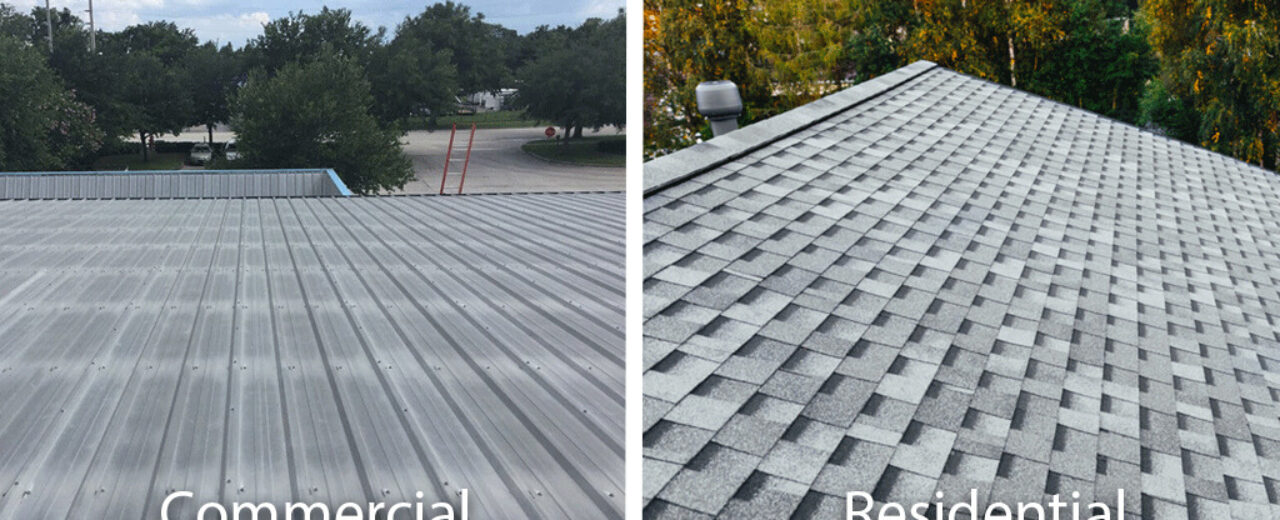Understanding the Difference Between Residential and Commercial Roofing
When it comes to roofing, not all roofs are created equal. Residential and commercial roofing may serve the same fundamental purpose—protecting a building from the elements—but the way they’re built, maintained, and repaired can differ significantly. Understanding these differences is key whether you’re a property owner, contractor, or building manager.
1. Design and Structure
One of the most noticeable differences lies in the design. Residential roofs are typically steep-sloped with a variety of styles like gable, hip, or mansard. They’re often more visible from the ground, which makes aesthetic appeal a bigger factor. In contrast, commercial roofs usually have a low slope or are completely flat, especially on larger buildings like warehouses, retail spaces, or office complexes. This flat design allows for easier placement of HVAC systems and other equipment but requires more intricate drainage systems.
2. Materials Used
Residential roofing materials are usually selected for their look and durability. Asphalt shingles are the most common, but options like metal, tile, and wood shakes are also popular. Commercial roofing, on the other hand, prioritizes functionality and long-term performance. Materials like TPO, EPDM, PVC, and modified bitumen are commonly used due to their waterproofing and energy-efficient properties.
3. Installation and Maintenance
Installing a residential roof is often quicker and less complex, typically taking a few days depending on the size of the home. Commercial roofing projects are generally more time-consuming and involve specialized equipment and larger crews. Maintenance also varies—residential roofs may need occasional inspections and shingle replacements, while commercial roofs require regular maintenance to manage drainage, flashing, and membrane integrity.
4. Cost and Complexity
Because of their size and complexity, commercial roofs usually come with higher installation and maintenance costs. They also require specialized knowledge, especially when dealing with large-scale systems or city codes. Residential roofing is typically more straightforward, making it more cost-effective for homeowners.
5. Purpose and Usage
Lastly, the purpose of the building can influence the roofing decisions. Commercial buildings may need roofing systems that support heavy foot traffic, solar panels, or mechanical systems. Residential roofs rarely support this kind of load.
Final Thoughts
While residential and commercial roofing may look similar from a distance, their differences in design, materials, and functionality make them two distinct specialties. Whether you’re replacing your home’s shingles or managing a flat-roofed office building, choosing the right roofing system—and contractor—makes all the difference.


